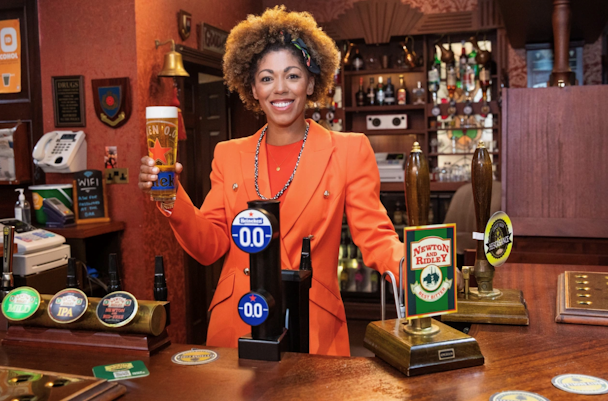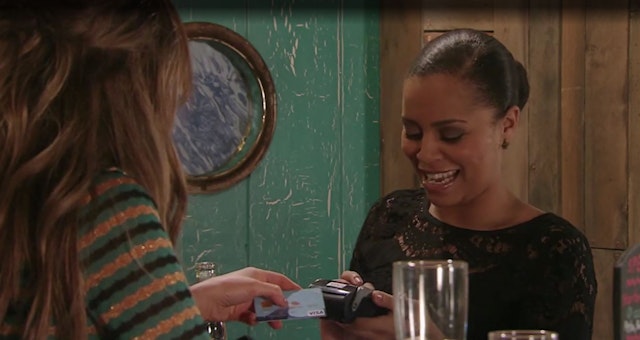Product placement gaining ‘momentum’ in UK soaps as linear draw wilts
For decades soaps have been a beloved TV staple, but audiences are adopting new viewing habits and eroding the pull of prime-time ad spots. The cancelation of Australian show Neighbours highlights the need for new revenue streams. The Drum explores.

Heineken’s product placement deal with ITV / ITV
The Friday evening soap slot, in particular, is iconic in UK advertising, with brands favoring them to launch campaigns and deliver famous brand moments like the Tetley Tea Folk. But as audiences on commercial broadcasters ITV and Channel 4 migrate from linear into ITVX and All4, watching episodes at their convenience, what’s the future of the traditional 30-second soap spot, which lives and dies on appointment viewing? In video on demand (VOD), viewers will likely have programmatically-served ads targeted to them, rather than the mass media moments of everyone seeing the same campaigns in linear.
Ratings expert Stephen Price found Coronation Street’s audience had dropped by 19% between 2017 to 2021, while Emmerdale was down 22% and EastEnders has dropped by 37% over the same period. The audience drop-off forced ITV to switch up its soap schedules, moving Emmerdale to 7.30pm every day with an hour-long episode on Thursday, and Coronation Street now plays for an hour at 8pm on Monday, Wednesday and Friday.
ITV’s director of commercial sales and partnerships Mark Trinder believes product placement is one answer. He says the inherent challenge with blending live and linear audiences is to ensure “brands are woven in in a natural way and rhythm that keeps them [brands] coming in multiple touchpoints.” This, he says, has made product placement “much more interesting to brands than it was before.”
So far, product placement has never been a big revenue driver for the UK broadcasters, having only been legal since 2010. The market lags far behind its US counterparts, which account for 56.5% of the global market, worth an estimated $11.63bn.
ITV recently partnered with Heineken to install alcohol-free beer drafts into its soap pubs in Coronation Street’s Rovers Return and Emmerdale’s Woolpack. Managing partner at ScenarioUK Matthew Leggett brokered the Heineken/ITV deal. He chose the soaps because they “deliver high reach and frequency, [have] contextual relevance being set in the pub and [are] unintrusive and unskippable.”
“I can fully appreciate why broadcasters like ITV and Channel 4 are delivering innovative solutions outside of the traditional soap spot,” Leggett says.
Interestingly, the deal makes Heineken the first beer brand to be placed on British TV as Ofcom prevents alcohol products from product placement. Heineken said it hopes to “normalize alcohol-free beer” by having audiences see landlords pull zero-alcohol pints.
It could work. Soaps have a history of normalizing brand behavior. Visa sought to normalize contactless payments, Nationwide introduced an ATM in Coronation Street in 2011 and the National Lottery tied with Coronation Street and Emmerdale to get people into the habit of buying tickets. Also, there’s a reason you may boil the kettle during the ad break – decades of tea associations help build the habits.

“The soaps with their natural rhythm across the week and the storytelling is a great way to introduce normalization of a behavior in a subtle way,” Trinder says.
Trinder continues that while product placement will become a bigger slice of ITV’s revenue, he cautions that deals require more work and are complex to execute. “Product placement requires a very different approach – it has got to be right and sit within that show,” he says. “It’s a very different set of criteria we are looking for [when] compared to when I ask my guys to take commercial inventory out to market. They are very sophisticated deals,” Trinder says.
The deals come with an entirely different set of commercial objectives. He also admits the placements are hard to price, and it’s hard to find an organic fit. When ITV introduced Co-op and Costa to the soaps due to their northern heritage, Trinder knew the audiences would welcome them. “There are just certain brands our viewers will take an issue with,” he says.
According to Leggett, “the UK is just scratching the surface when it comes to product placement, but there is a lot more head growth to come ... [for] forward-thinking clients, it’s a particularly exciting time for product placement.”
But can brands perhaps make the linear product unmissable instead?
Last Christmas, Co-op aired its first live ad during a Friday night episode of Coronation Street. The supermarket’s propositions and communications director Mel Matson said the online migration of audience is a concern, but “that also presents an opportunity to execute these set-piece advertising moments in a more omnichannel way, thinking of ways in which to bring the same idea to life in both environments.”
For Co-op’s live ad it was able to produce 10-second cut-downs of the creative and run those across VOD and online, which gave reach to that on-demand audience and drove frequency, Matson says. The live spot reached 4 million on the night and resulted in a 46% increase in Co-op social conversations in the 24 hours post-airing.
Leggett adds: “There is still power in the popular soap ad break spots, which to an advertiser is extremely appealing. With the media cost of these linked to audience delivery, to an extent, there is some security in knowing this.”
Check out the Future of TV hub and subscribe to the newsletter here. And listen to our TV Talks podcast here.

